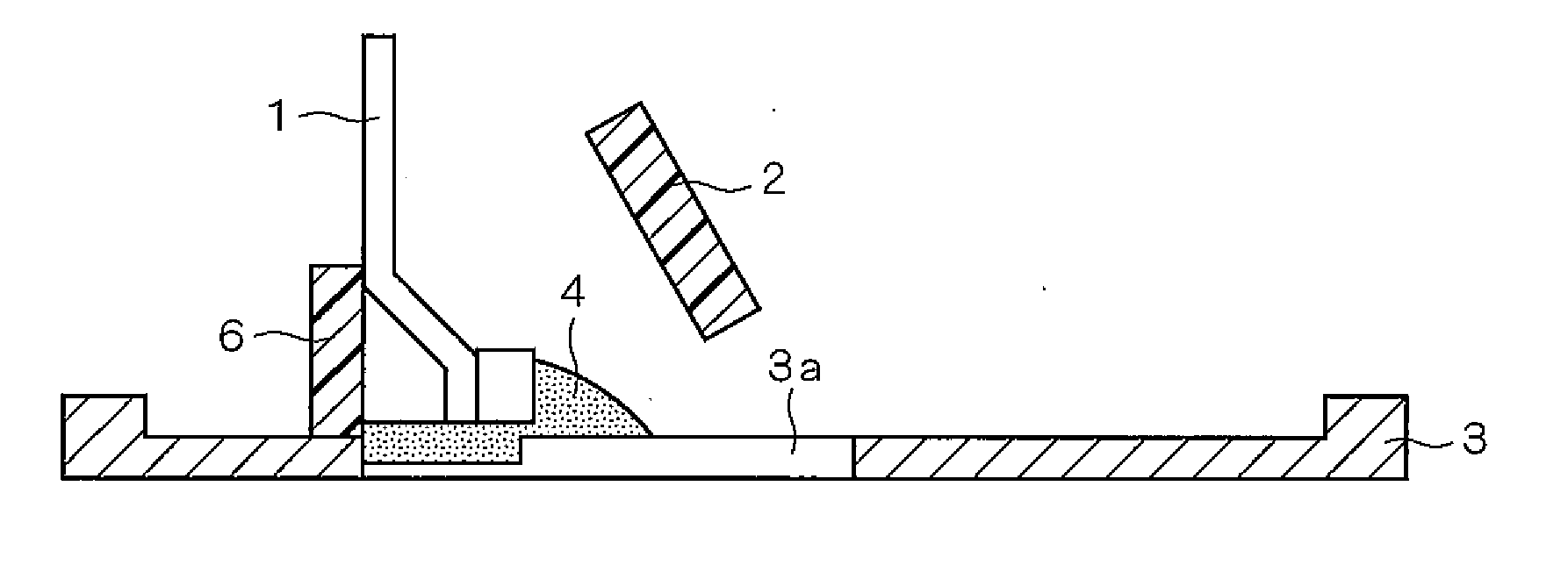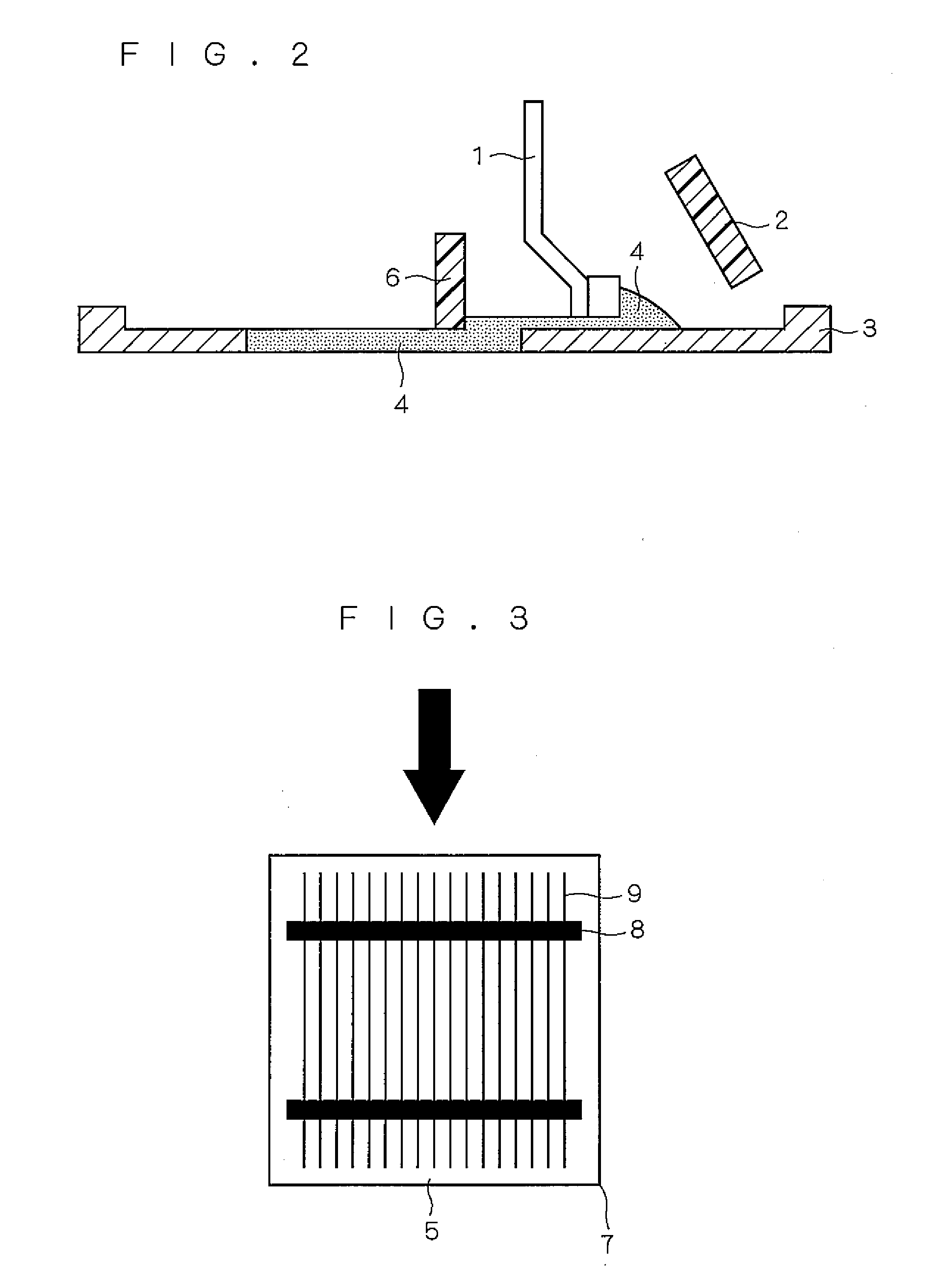Conductive Paste, Solar Cell Manufactured Using Conductive Paste, Screen Printing Method and Solar Cell Formed Using Screen Printing Method
a technology of conductive paste and solar cells, which is applied in the direction of non-metal conductors, conductors, organic conductors, etc., can solve the problems of large value of wiring, inability to obtain desired printing results, and inability to obtain printing shapes in some cases, so as to achieve high printing accuracy, prevent bleeding of conductive paste, and easily make printing paste
- Summary
- Abstract
- Description
- Claims
- Application Information
AI Technical Summary
Benefits of technology
Problems solved by technology
Method used
Image
Examples
Embodiment Construction
[0036] Hereinafter, a preferred embodiment of the present invention will be described in detail with reference to figures.
[0037] A preferred embodiment of a printing method of the present invention will be described with reference to FIG. 1A to FIG. 1C. FIG. 1A to FIG. 1C are views showing first to third steps in a screen printing method in accordance with the preferred embodiment of the present invention, respectively. These figures show a scraper 1, a printing squeegee 2, a screen 3, a pattern hole 3a, a paste 4, an object to be printed 5 and a filling squeegee 6. A screen printer used in the screen printing method in accordance with this embodiment has mainly a scraper 1, a first squeegee 2, a screen 3 and the second squeegee 6, and prints the paste 4 on the object to be printed 5 via the screen 3 provided with the pattern hole 3a. The scraper 1 is a member for spreading the paste 4 on the surface of the screen 3. The second squeegee 6 is a squeegee (also referred to as the “fil...
PUM
| Property | Measurement | Unit |
|---|---|---|
| frequency | aaaaa | aaaaa |
| frequency | aaaaa | aaaaa |
| viscosity | aaaaa | aaaaa |
Abstract
Description
Claims
Application Information
 Login to View More
Login to View More - R&D
- Intellectual Property
- Life Sciences
- Materials
- Tech Scout
- Unparalleled Data Quality
- Higher Quality Content
- 60% Fewer Hallucinations
Browse by: Latest US Patents, China's latest patents, Technical Efficacy Thesaurus, Application Domain, Technology Topic, Popular Technical Reports.
© 2025 PatSnap. All rights reserved.Legal|Privacy policy|Modern Slavery Act Transparency Statement|Sitemap|About US| Contact US: help@patsnap.com



